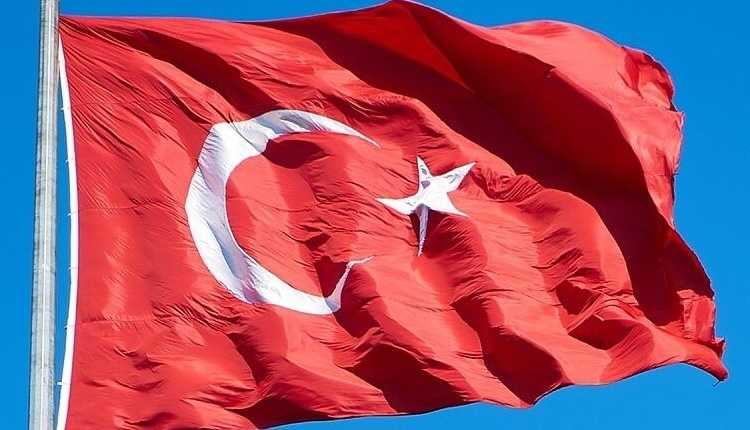Three Lessons For Israeli Protesters From Turkey’s Gezi Protests
Judicial reform protests continues to grip Israel. Over the past 12 weeks, hundreds of thousands march against Prime Minister Benjamin Netanyahu’s plan to reshape the judiciary. According to organisers, on some of the day of protests, half a million people gathered on the streets, marking a significant moment in Israel’s history.
Some Israeli protesters warn of a Turkey-like fate, as they were observed displaying signs to express fear of sliding into a similar political situation.
These protests bear some resemblance to Turkey’s Gezi protests in 2013, which, despite massive participation, ultimately failed to achieve their broader goals and couldn’t prevent a worsening political situation in the country.
While there are notable differences between Israeli and Turkish states and societies, there are still valuable lessons that can be gleaned from the Gezi protests in Turkey and applied to the ongoing protests in Israel. Despite the dissimilarities, the similarities between the protests in both countries offer important insights into effective strategies for social and political change.
Why Israelis are Taking to the Streets?
Netanyahu’s plan to overhaul the judiciary involves allowing a simple majority of 61 in the 120-seat Knesset to override almost any supreme court ruling, and enabling politicians to appoint most of the justices to the bench. Critics fear eroded judicial independence and democracy.
As tensions mounted, Netanyahu sacked the Defense Minister, who had broken ranks with him on the issue. This move galvanized a diverse range of actors, including unions, and led to mass strikes and expanded protests. In response, Netanyahu announced a pause in passing the legislation on the judiciary. The Defense Minister, a right-wing hawk, swayed due to pressure from within the Israeli military.
The Gezi Protests began in late May 2013 in Istanbul, Turkey, initially opposing the government’s plan to demolish Gezi Park, one of the few remaining green spaces in central Istanbul, to make way for a shopping mall and a replica of an Ottoman-era barracks. The heavy-handed response by the police to the initial peaceful sit-in sparked outrage, leading to wider protests across the country, involving millions of people. The demonstrations eventually evolved into a broader movement against the perceived authoritarianism and erosion of democratic rights under then-Prime Minister Recep Tayyip Erdoğan’s government.
Learning from Gezi: Lessons for Israeli Activists
The first lesson is that the Gezi protesters arguably overestimated their power and underestimated the government’s strength and support. The protesters were overconfident and believed that they could push a change of the government through street protests. However, subsequent elections did not produce the expected results and the police crackdown failed to generate a strong enough reaction. Israeli protesters must gauge the real strength and unity behind Netanyahu’s alliance. They should acknowledge that the support for the judicial overhaul could be numerically higher and that the silent support behind Netanyahu’s alliance could be more committed and united than the opposition.
The second lesson is the need for Israeli protesters to focus on grassroots social change rather than just changing the government. Gezi protesters focused more on “capital P” politics, which meant changing the government rather than society. In Israel, protesters must study and address the political drift that brought the country to its current situation under a right-wing religious bloc. They should seek ways to reconnect with the broader population to forge social cohesion.
The third lesson is the need to address internal divisions and foster dialogue among protesters. The Gezi protesters were united in their opposition to Erdogan, but they were divided on other issues, including on the Kurdish issue. In Israel, polarization on key issues like the Palestinian question could weaken the opposition. The protesters must address internal coherence and create better channels of internal dialogue.
By learning from these lessons, Israeli protesters can avoid the mistakes that led to the failure of the Gezi protests. They can draw from the successful strategies of Turkey’s opposition, such as grassroots solidarity and a unifying political strategy.
Grassroots solidarity as a unifying force against power
The success of the spirit of the Gezi protests came several years later, when grassroots supporters of the opposition demonstrated their ability to unite disparate groups under a common goal. They won the local elections of 2019 and later maintained a unified opposition front under the leadership of Kemal Kilicdaroglu.
Kilicdaroglu’s sustained focus on building a broad-based coalition and long term political change helped to bring together diverse groups and forge a cohesive movement.
By bringing together diverse groups and building a broad-based coalition, Israeli protesters can strengthen their movement and increase their chances of success.
The Gezi Protests in Turkey offer valuable lessons for Israeli protesters as they continue to push back against Netanyahu’s plan to overhaul the judiciary. By recognizing the power dynamics and support for the government, focusing on grassroots social change, addressing internal divisions, and learning from successful opposition strategies in Turkey, Israeli protesters can strengthen their movement and increase their chances of success.
Only with long-term strategic planning and a commitment to grassroots solidarity, the Israeli protest movement can lose a specific political battle but achieve meaningful change and shape the future of the country in the long run.
Follow me on Twitter or LinkedIn. Check out my website or some of my other work here.



